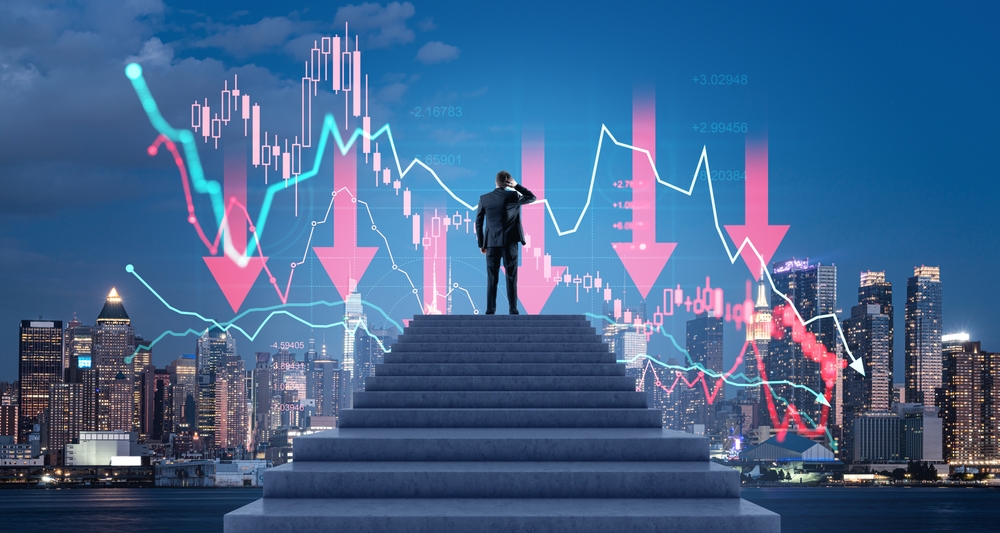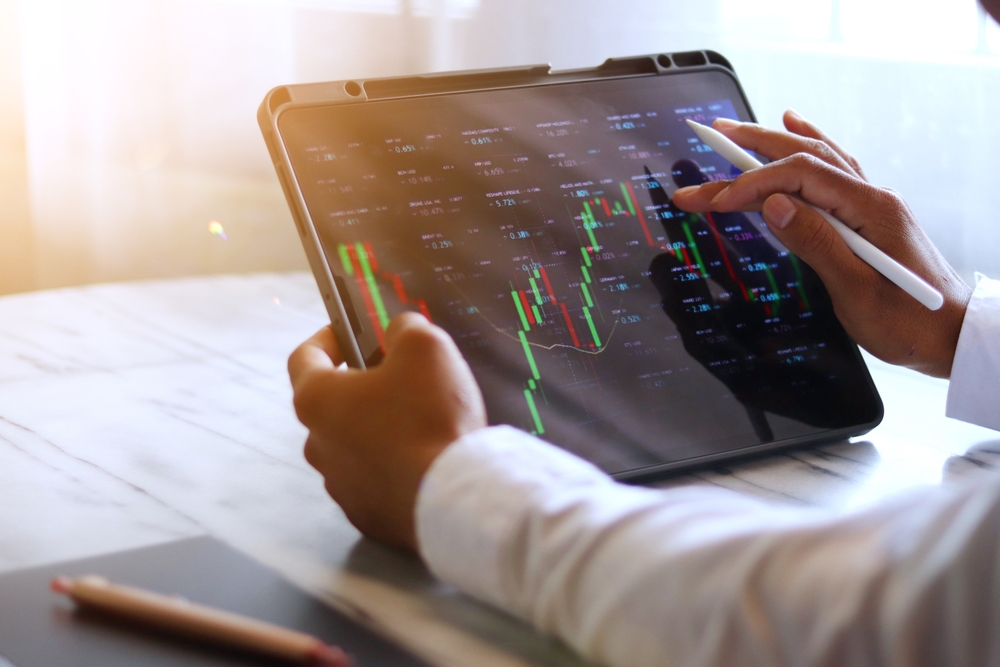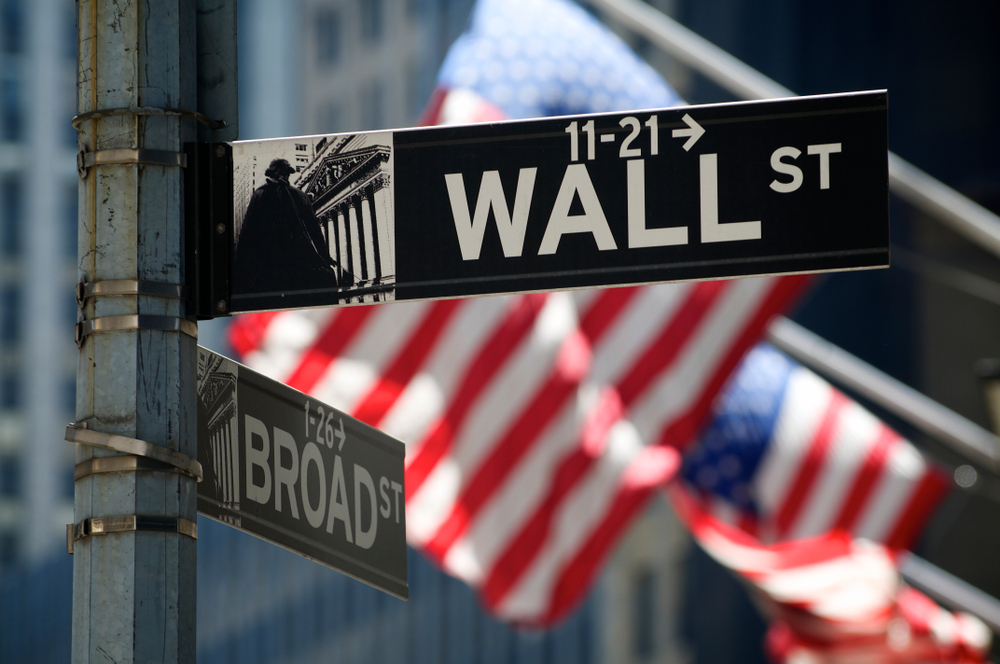The financial landscape is fraught with uncertainty, and it’s becoming increasingly evident that we might be on the brink of another crisis that could rival the one we experienced in 2008. While it’s difficult to predict the future with absolute certainty, there are several signs that suggest we should brace ourselves for turbulent times ahead. Let’s explore these indicators together and consider how they might impact our financial well-being.
1. Skyrocketing Debt Levels Are Ringing Alarm Bells

Debt levels around the world are soaring to unprecedented heights, and this could spell disaster for the global economy. According to the International Monetary Fund, global debt has reached a staggering $226 trillion, raising concerns about countries’ and corporations’ abilities to manage their financial obligations. Household debt is also climbing, meaning everyday people are stretching their budgets thinner than ever. The risk is that if interest rates rise or economic conditions worsen, many may find themselves unable to meet their debt payments.
The burden of debt isn’t just a problem for individuals and companies; it poses a systemic risk to financial stability. With governments taking on massive amounts of debt to stimulate their economies, there’s worry that this could lead to a domino effect of defaults. If major economies start to struggle, it could trigger a chain reaction impacting financial markets worldwide. It’s crucial to keep an eye on debt levels and understand the potential repercussions they might have on the broader economy.
2. Stock Market Volatility Is Keeping Investors on Edge

Lately, the stock market has been acting like a roller coaster, and it’s making investors very nervous. Huge swings in stock prices, often fueled by speculative trading and algorithmic trading, are causing uncertainty and unease. According to CNBC, this volatility is partly due to concerns about inflation, interest rate hikes, and geopolitical tensions. These factors are causing investors to rethink their strategies and question the sustainability of current market valuations.
The volatility isn’t just limited to stocks; it’s affecting other financial instruments like bonds and commodities too. When markets are this unpredictable, it’s harder for investors to make informed decisions, which can lead to rash choices and further instability. If this volatility continues, it might shake confidence in the financial markets, potentially leading to a broader economic downturn. Investors need to remain vigilant and perhaps more conservative in their approach during these unpredictable times.
3. Inflation Is Eating Away at Purchasing Power

Inflation is creeping up, and it’s starting to take a real toll on consumers’ purchasing power. Prices for everyday goods and services are rising, which means people are getting less for their money. According to the U.S. Bureau of Labor Statistics, inflation rates are higher than they have been in decades. This rapid increase in prices can lead to a decrease in consumer spending, a key driver of economic growth.
Higher prices also put pressure on businesses, as increased costs can lead to lower profit margins. Companies may struggle to maintain their workforce numbers or even stay afloat, potentially leading to higher unemployment rates. If inflation continues to rise unchecked, it can create an environment where economic growth stagnates, and the risk of recession grows. It’s essential to monitor inflation trends and consider their broader impact on the economy and individual financial health.
4. Real Estate Market Bubbles Are Inflating

The real estate market is showing signs of overheating, with property prices reaching record highs in many parts of the world. This surge is often driven by speculative buying and an imbalance between supply and demand. When property values rise too quickly, it can create a bubble that is at risk of bursting if economic conditions change. If interest rates increase or lending standards tighten, it could lead to a sharp decline in property values, leaving many homeowners underwater on their mortgages.
A real estate downturn has a ripple effect, impacting construction, retail, and various service industries tied to housing. It can lead to job losses and reduced consumer spending, further exacerbating an economic slowdown. Housing market instability can also affect banking systems, as mortgage defaults rise and financial institutions face increased exposure to bad loans. Keeping a close watch on real estate trends can help us anticipate potential pitfalls and make informed decisions about housing investments.
5. Unemployment Rates Are A Cause for Concern

Even as some economies show signs of recovery, unemployment rates remain a worryingly persistent issue. Job growth is uneven across different sectors, with some industries still struggling to recover from pandemic-related disruptions. Many people are facing long-term unemployment, which can have lasting effects on their financial stability and mental well-being. The longer individuals remain out of work, the harder it becomes for them to re-enter the job market, creating a cycle of economic hardship.
High unemployment rates can also lead to reduced consumer spending, which further slows economic growth. When people are uncertain about their job prospects, they’re less likely to make major purchases or invest in the future, which can stifle economic momentum. It’s important to address unemployment through targeted policies and initiatives that promote job creation and skills development. By focusing on strengthening the labor market, we can help mitigate some of the risks associated with a potential financial crisis.
6. Supply Chain Disruptions Are Causing Economic Strain

Global supply chains are under tremendous strain, affecting the availability and cost of goods worldwide. These disruptions have stemmed from a multitude of factors, including pandemic-related shutdowns, natural disasters, and geopolitical tensions. When supply chains are interrupted, it leads to delays, shortages, and increased costs for businesses and consumers alike. This can contribute to inflationary pressures and create a challenging environment for companies trying to manage inventory and pricing strategies.
The strain on supply chains can also stifle economic recovery efforts, as businesses struggle to meet demand. If these disruptions persist, they could lead to a slowdown in production and economic growth. It highlights the importance of building more resilient and flexible supply chains that can adapt to unforeseen challenges. By addressing these bottlenecks, we can help ensure that the economy remains robust in the face of potential crises.
7. Geopolitical Tensions Are Adding Fuel to the Fire

Geopolitical tensions are on the rise, and they pose significant risks to global financial stability. Conflicts and diplomatic standoffs between major powers can lead to economic sanctions, trade restrictions, and disruptions in international markets. When political tensions escalate, they often result in increased volatility in financial markets, raising uncertainty for investors and businesses. This uncertainty can deter investment and hinder economic growth, as companies become more cautious in their expansion plans.
Moreover, geopolitical tensions can have a direct impact on commodity prices, particularly oil and gas. Any disruption in the supply of these essential resources can lead to price spikes and inflationary pressures. The interconnected nature of the global economy means that geopolitical issues in one region can have far-reaching effects across the world. Keeping an eye on international relations and their potential economic fallout is crucial for anticipating and mitigating the risks of a financial crisis.
8. Corporate Profits Are Under Pressure

Many companies are experiencing pressure on their profit margins due to rising costs and changing consumer behaviors. With inflation driving up the cost of raw materials and labor, businesses are finding it increasingly challenging to maintain profitability. This situation is compounded by shifts in consumer preferences and the need to invest in digital transformation to remain competitive. When corporate profits decline, it can lead to cost-cutting measures such as layoffs or reduced investment in growth initiatives.
A sustained decrease in corporate profits can have a ripple effect throughout the economy. It can lead to lower stock prices, reduced dividends, and diminished investor confidence. This in turn impacts the broader financial markets and can contribute to economic slowdown. By monitoring corporate earnings reports and understanding the pressures companies face, we can gain insight into the overall health of the economy and potential risks of a crisis.
9. Central Banks Are Running Out of Tools

Central banks have been the backbone of economic recovery efforts, but their toolkit is becoming increasingly limited. After years of low interest rates and quantitative easing, there are concerns about how much more central banks can do to stimulate the economy. With little room left to cut interest rates further, central banks might struggle to respond effectively to a new economic downturn. This limitation means there is less flexibility to deploy traditional monetary policy measures during a crisis.
Moreover, over-reliance on central banks can lead to asset bubbles and misallocations of capital, creating additional challenges for the financial system. If central banks are unable to act boldly in the face of a crisis, it could lead to prolonged economic stagnation or even a recession. This underscores the importance of developing alternative strategies to support economic growth and maintain financial stability. By diversifying our approaches, we can better prepare for the potential challenges of the future.
10. Emerging Markets Are Showing Signs of Instability

Emerging markets, which have been a source of global economic growth, are beginning to show signs of instability. Many of these economies are grappling with high levels of debt, currency volatility, and political turmoil. As interest rates rise in developed countries, capital flight from emerging markets can exacerbate these issues, leading to economic contractions. This instability can have a spillover effect, affecting trade and investment flows globally.
The challenges faced by emerging markets also highlight the interconnectedness of the global economy. When these economies struggle, it can impact supply chains, commodity prices, and financial markets worldwide. It’s essential to monitor the health of emerging markets and consider their potential impact on the global financial system. By understanding the vulnerabilities of these economies, we can better anticipate and plan for potential disruptions.
11. Financial Institutions Are Facing Increased Scrutiny

In the wake of the 2008 financial crisis, financial institutions have been subject to increased scrutiny and regulation. While these measures aim to enhance stability and reduce systemic risk, they also pose challenges for banks and other financial entities. Compliance with stringent regulations can lead to increased operational costs and reduced profitability for these institutions. This, in turn, may limit their ability to lend and support economic growth.
The increased scrutiny can also create an environment of caution, where financial institutions are less willing to take on risks. While this conservatism can prevent reckless behavior, it may also stifle innovation and limit access to credit for businesses and consumers. The balance between regulation and economic growth is delicate, and missteps can have significant consequences for the financial system. Staying informed about regulatory changes and their implications is crucial for understanding the potential risks facing financial institutions.
12. Consumer Confidence Is Wavering

Consumer confidence, a key driver of economic growth, is showing signs of wavering amid ongoing uncertainties. When consumers feel uncertain about their financial future, they’re less likely to spend money, which can slow down economic activity. Factors such as rising inflation, job insecurity, and geopolitical tensions contribute to this cautious outlook. A decline in consumer confidence can lead to reduced demand for goods and services, impacting businesses and potentially leading to layoffs.
In addition to affecting spending habits, waning consumer confidence can also impact investment decisions. When people are unsure about the future, they may delay major purchases or pull back on investments, further slowing economic momentum. It’s important to track consumer sentiment and understand the underlying factors influencing it. By addressing the causes of uncertainty, we can work towards restoring confidence and supporting sustainable economic growth.
This article is for informational purposes only and should not be construed as financial advice. Consult a financial professional before making investment or other financial decisions. The author and publisher make no warranties of any kind.








